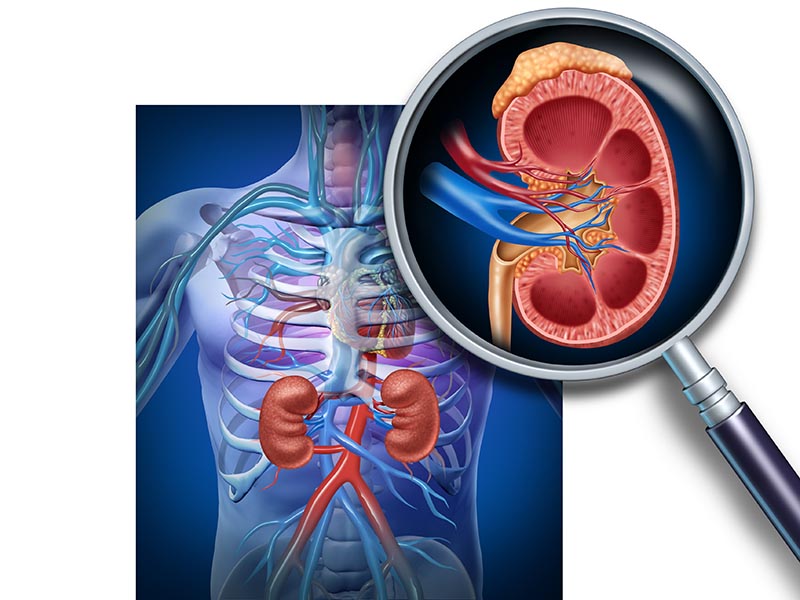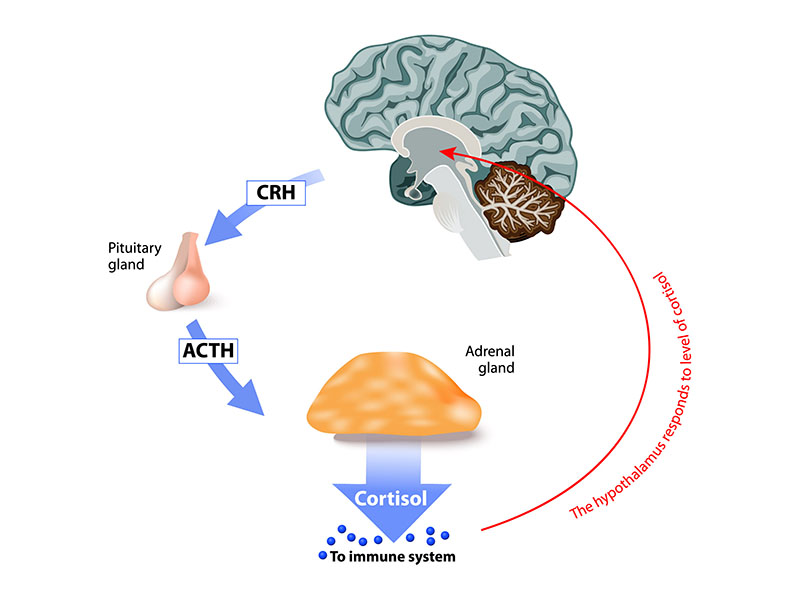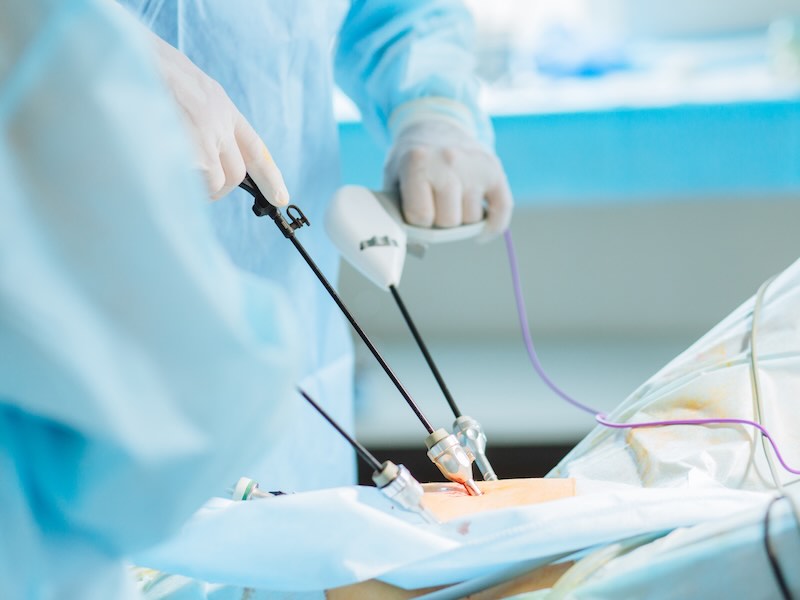
Adrenal Gland Surgery
Common Hormones
- Catecholamines (Epinephrine/Norepinephrine) – Epinephrine is known as adrenaline in layperson’s terms. These hormones are released from the central portion of the adrenal gland, known as the medulla. They are responsible for inducing the “fight or flight” response in times of stress. Specifically, they work to increase your heart rate, blood pressure, and metabolism.
- Mineralcorticoids (Aldosterone) – Aldosterone is a hormone released from the cortex (zona glomerulosa), or outer covering, of the adrenal gland. This hormone is produced and released in response to low blood pressure sensed by the kidneys. It works on the kidneys to reabsorb more sodium and water back into the system, effectively increasing blood pressure.
- Glucocorticoids (Cortisol) – Cortisol is also a hormone released by the cortex (zona fasciculata) of the adrenal gland. This is an important hormone that helps mobilize fats, proteins, and carbohydrates for energy production. It also improves the function of other hormones.
- Androgens (DHEA and testosterone) are known as male sex hormones. Secreted from the cortex (zona reticularis)

Adrenal Abnormalities
Abnormalities occur in the adrenal glands when solitary tumors develop in one of these areas. Commonly, the tumors are encountered incidentally when people undergo CT or MRI scans of the abdomen for other reasons. However, sometimes people will present with excessive hormone release of one of the above hormones as a result of a tumor. Most tumors of the adrenal gland are not biologically active. When they are, people may present with the following symptoms:
- Excessive catecholamines from a pheochromocytoma result in episodic hypertensive episodes with excessive sweating, headaches, palpitations, and severely elevated blood pressures. This can cause severe or life-threatening injury to other organs and must be treated. People are usually started on medications right away to control the blood pressure swings. Eventually, surgery is recommended.
- Excessive aldosterone from an aldosteronoma results in long-standing hypertension along with low potassium levels. These tumors tend to be small and must be differentiated from a diffuse disease process that involves both glands and is not surgically corrected, called bilateral adrenal hyperplasia. Once confirmed in location and size, we recommend surgical removal of the gland to cure the hypertension and low potassium levels.
- An excessive cortisol-producing tumor is also known as Cushing’s syndrome. Individuals with this condition typically exhibit central body obesity, glucose intolerance or elevations, high blood pressure, excessive hair growth, and osteoporosis (a condition characterized by bone loss). Excessive cortisol release from the adrenal glands can happen as a result of other abnormalities. Once there is confirmation that it is coming from a solitary mass in the adrenal gland itself, surgical resection is recommended. This is typically done through various blood and urine tests, as well as imaging techniques such as a CT scan. Post-operatively, people may need to be on a steroid taper to allow time for the other adrenal gland to “wake up” and resume cortisol production, as it may have been suppressed previously.

Treatment & Surgery
Surgery is recommended if you have a tumor that is functional or a non-functional tumor that is suspicious for adrenal cortical carcinoma (adrenal cancer). This is determined by the size, growth, and imaging characteristics of a mass seen on the adrenal gland. Cancer of the adrenal gland is rare but is challenging to prove without pathologic confirmation. It is rare for only the mass to be removed without also removing the entire gland, as recurrence can be a significant problem.
Additionally, it is rare for both adrenal glands to be removed. If surgery is recommended, resection of the adrenal gland is commonly done robotically or laparoscopically. This involves between 3 and 4 small incisions within the abdomen to remove the adrenal gland with the tumor. People typically stay in the hospital for 2-3 nights. Modifications to blood pressure medications or cortisol/steroid medications depend on how people do post-operatively.




